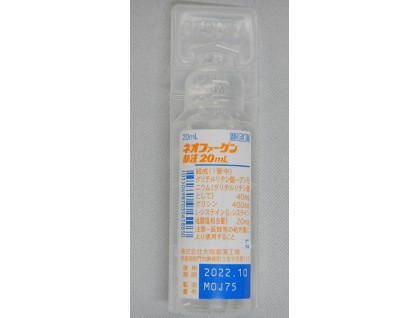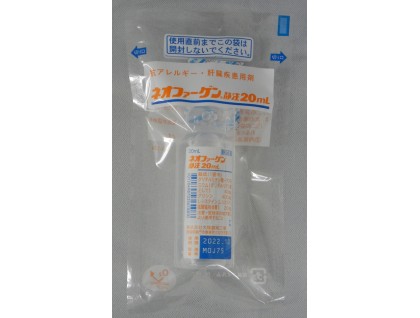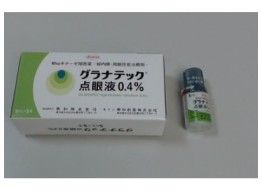Neophagen I.V. injections for liver dysfunction (monoammonium glycyrrhizinate, glycine, L-cysteine)
What are Neophagen I.V. injections for liver dysfunction (monoammonium glycyrrhizinate, glycine, L-cysteine)?
Neophagen I.V. injections are the specialized amino acid formulations featuring a unique blend of monoammonium glycyrrhizinate, glycine, and L-cysteine. This medicine is meticulously designed to deliver potent anti-inflammatory, anti-allergic, and liver recovery benefits.
The Advantages of Neophagen I.V. Injections
Neophagen I.V. injections are exceptionally effective in treating a wide array of conditions, including pediatric strophulus, eczema/dermatitis, urticaria, cutaneous pruritus, stomatitis, phlyctenoids, and drug/toxic rash. Moreover, they play a pivotal role in enhancing abnormal liver function associated with chronic liver disease. The inclusion of amino acids in these injections ensures efficient delivery of therapeutic effects.
The Science Behind Neophagen I.V. Injections
The innovative formulation of Neophagen I.V. injections contains 53 mg of monoammonium glycyrrhizinate (including 40 mg as glycyrrhizin acid), 400 mg of glycine, and 20 mg of L-cysteine in a 20 ml solution. This combination optimizes the absorption and effectiveness of glycyrrhizin, a compound with a longstanding history of use in Japan since 1948 for allergy inflammation and since 1979 for chronic hepatitis. Neophagen overcomes the limitations of glycyrrhizin alone, such as low membrane permeability and gel formation at high concentrations, with its balanced formulation.
Scientific Validation of Neophagen I.V. Injections
Scientific studies affirm the efficacy of Neophagen I.V. injections. Research, including the study titled “Combination of monoammonium glycyrrhizinate and cysteine hydrochloride ameliorated lipopolysaccharide/galactosamine-induced acute liver injury through Nrf2/ARE pathway,” demonstrates that this combination promotes the nuclear accumulation of Nrf2, enhances its transcriptional activity, and boosts the expression of Nrf2-target genes, offering substantial protection against acute liver injury.
Why Opt for Neophagen I.V. Injections?
- Comprehensive Treatment: Neophagen I.V. injections provide a holistic approach to treating a variety of skin and liver conditions.
- Enhanced Absorption: The unique blend of amino acids enhances the absorption and efficacy of glycyrrhizin.
- Scientifically Substantiated: Extensive research supports the efficacy of Neophagen I.V. injections in treating liver dysfunction and other related conditions.
- Established Track Record: With decades of use in Japan, the safety and efficacy of glycyrrhizin-based treatments are well-documented.
Neophagen I.V. injections signify a significant breakthrough in the treatment of liver dysfunction. By harnessing the power of amino acids, this medication delivers comprehensive therapeutic benefits for a range of conditions, ensuring enhanced liver function and overall well-being. Embrace the scientifically validated effectiveness of Neophagen I.V. injections and discover the transformative benefits firsthand.
Active principles: monoammonium glycyrrhizinate, glycine, L-cysteine
Amount: 50 vials * 20 ml
Indications: treatment of the following diseases and conditions:
- liver dysfunction in chronic liver disease,
- pediatric strophulus,
- eczema/dermatitis,
- urticaria,
- skin pruritus,
- stomatitis,
- phlyctenoids,
- drug rash/toxic rash.
How to take:
For pediatric strophulus, eczema/dermatitis, urticaria, cutaneous pruritus, stomatitis, phlyctenoids, drug rash/toxic rash: adults should receive 5-20 ml injected intravenously once a day. The dosage may be increased or decreased depending on age and symptoms.
For improvement of abnormal liver function in chronic liver disease: 40-60 ml is injected or infused intravenously once a day. The dosage may be increased or decreased depending on age and symptoms.
If the dosage is increased, it should not exceed 100 ml per day.
For intravenous administration, the administration rate should be as slow as possible while observing the patient's condition.
Contraindications and precautions: Store in a dry cool place, out of reach of children. Do not use for pregnant or breastfeeding women. Do not use for patients with aldosteronism, myopathy, or hypokalemia. Use with caution for elderly patients, as clinical experience has shown a high incidence of side effects such as hypokalemia. Avoid using any preparations containing glycyrrhizinic acid or licorice. Do not expose to sunlight or heat. If allergic symptoms occur, discontinue use.




